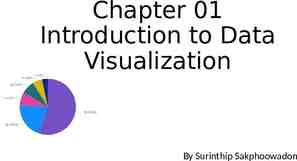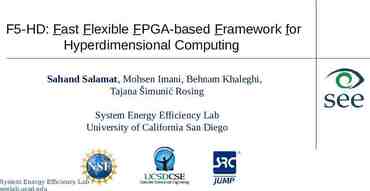ISCHEMIC HEART DISEASE; CONGESTIVE HEART FAILURE; SHOCK
30 Slides612.50 KB

ISCHEMIC HEART DISEASE; CONGESTIVE HEART FAILURE; SHOCK

Coronary Artery Disease Vascular disorder narrowing/blockage of arteries to heart – Arteries supplying heart branch directly from aorta Bring richly oxygenated blood Necessary to supply myocytes with oxygen, nutrients Heart needs constant supply of oxygen for muscle activities

Coronary artery disease decr'd blood supply to cardiac muscle (Fig. 23-21) – So ischemia – Persistent ischemia hypoxia – Infarction leads to “heart attack” About 50% of all deaths in U.S. Heart has high metabolic rate – Constantly contracting to pump oxygenated and nutrient-filled blood to rest of body – Urgent to life to maintain the health of heart, so – Urgent to life to maintain oxygen-rich blood flow to heart

Modifiable/nonmodifiable factors put some people more at risk than others – Same as for vascular disease: Hyperlipidemia - incr'd plasma lipoproteins Hypertension - may cause or exacerbate Cigarette smoking - STOP!! Diabetes

Myocardial ischemia results Decr’d blood flow to heart (Fig.23-14) Myocardial cell metabolic demands not met Time frame of coronary blockage – 10 seconds following coronary block Decr’d strength of contractions Abnormal hemodynamics – Several minutes later Decr’d glucose metab decr’d aerobic metab, so Anaerobic metab, so Build-up of lactic acid (toxic within cell)

Time frame – cont’d – 20 minutes after blockage Myocytes still viable, so If blood flow restored, and incr’d aerobic metab, and cell repair, Incr’d contractility – About 30-45 minutes after blockage, if no relief Cardiac infarct

Clinical – May hear extra, rapid heart sounds (S3) – ECG changes (Fig.23-18) T wave inversion ST segment depression – Chest pain 20-30% of those suffering myocardial ischemia Called angina pectoris Feeling of heaviness, pressure Moderate severe In substernal area Often mistaken for indigestion May radiate to neck, jaw, left arm/shoulder

– Chest pain – cont’d Due to – Accum’n lactic acid in myocytes, OR – Stretching of myocytes Three types: stable, unstable, Prinzmetal – See p 645 Treatment – Pharmacologically manipulate bp, hr, contractility to decr oxygen demand of myocytes Nitrates dilate peripheral blood vessels, and – Decrease oxygen demand – Increase oxygen supply – Relieve coronary spasm

– Pharmacological treatment – cont’d Beta blockers – Block sympathetic input, so – Decrease heart rate, so – Decrease oxygen demand Digitalis – Increases force of contraction – Surgical Angioplasty – mechanical opening of vessels Revascularization (bypass) – Replace, shunt around occluded vessels

Myocardial infarction – endpoint Necrosis of cardiac myocytes – – – – Irreversible Commonly affects left ventricle Follows 30-45 mins unrelieved ischemia Wound repair signalled Structural, functional changes in heart tissue – – – – Decr'd contractility Decr'd LV compliance Decr'd stroke volume Dysrhythmias

Inflammatory response severe due to wound repair signals – Fibroblast proliferation to begin scar tissue formation – Leukocytes migrate to site of repair (myocytes) – Proteolytic enzymes released, degrade injured cells and dysfunctional biochemicals – Insulin secreted to increase glucose uptake, metabolism in myocytes Aids repair

Scarring results – Tissue now strong but stiff – Can’t contract like healthy cells Clinical – Sudden, severe chest pain Similar to pain with ischemia but stronger Not relieved by nitrates Heavy, crushing Radiates to neck, jaw, shoulder, left arm – Indigestion, nausea/vomiting – Abnormal heart sounds possible (S3,S4)

Clinical – cont’d – Blood tests show several markers: Leukocytosis Increased blood sugar Increased plasma enzymes – Creatine kinase (CPK) – Lactate dehydrogenase (LDH) – Aspartate aminotransferase (AST or SGOT) Cardiac specific troponin – ECG changes (Fig.23-22) Pronounced, persisting Q waves ST elevation T wave inversion

Treatment – First 24 hours crucial – Hospitalization, bed rest – Pain relief Morphine Nitroglycerin – Thrombolytics to break down clots – Administer oxygen

Manifestations of Heart Disease Congestive Heart Failure – Defined: heart progressively loses capacity, leading to back-up of blood flow through system – Leads to incr’d blood pressure, edema – Compensations to relieve effects at vasculature, heart BUT compensations are limited – Affects about 3 million patients in the U.S. – Slow developing

– Pathophysiology may include Altered contractility – Cardiac sarcomeres stretched too far » May occur with altered preload » So contractile force limited inadequate ejection Altered afterload (Fig.23-37) – Alteration in force against which heart must pump – May be due to » Vascular stenosis » Increased vascular resistance – To maintain cardiac output » Heart incr’s stroke volume » Heart incr’s rate » Results in incr’d need for oxygen by heart muscle

– Pathophysiology – cont’d Restrictions to pumping – Due to » Valve dysfunctions » Dysrhythmias » Pericardial disease Altered demand for oxygen by the heart – Compensations – body needs to: Increase blood return to the heart, by – Increasing blood volume through renin/angiotensin system (kidney) incr’d LV volume, which incr’d fiber stretch, which incr’d contractility » BUT may cardiac sarcomeres stretched too far (one cause of cardiac problem to begin with)

– Compensations – cont’d Increase heart rate and increase C.O. – Through nervous system » Need to incr sympathetic input Hypertrophy of cardiac muscle – Results in incr’d LV wall thickness – Should incr force of contractions – Heart will ultimately fail because compensations limited, sometimes cause other problems, may result in further cardiovascular damage or complications (Fig.23-28)

– Clinical Breathlessness/difficulty breathing – Especially lying down – Due to pulmonary edema Chest pain – Due to hypoxia at heart, resulting myocyte damage Fatigue/confusion – Due to decr’d blood flow to skeletal muscles and brain Skin pale, cold, sweaty Pulse, lung sounds abnormal – Treatment Decrease cardiac work Drugs to augment contractility Reduce afterload – How might you do this?

Manifestations of Heart Disease – cont’d Shock – Defined: clinical syndrome of underperfusion of organs (KNOW THIS!!) – May be due to: – Cardiac dysfunction (cardiogenic shock) (Fig.23-43) Electrical dysfunction – Tachycardia (incr’d heart rate), or – Bradycardia (decr’d heart rate) Mechanical dysfunction – Valve dysfunction – Trauma, pericarditis, etc. » When 40% of LV function lost, LV fails to pump sufficient blood to systemic circulation

Clinical (w/ respect to cardiogenic shock) – Decr’d contractility decreased stroke volume decreased C.O. decreased blood to organs – Pulmonary edema » Why should this occur? – Reflex vasoconstriction » Why should this occur? – Volume disorders- heart appears normal, but organs underperfused for other reasons (Fig.23-44): Volume loss (causing hypovolemic shock), due to – – – – Hemorrhage Edema Burns Dehydration

– Shock due to volume disorders – cont’d Volume maldistribution (causing vascular shock). – Vasculature dilates altered hemodynamics (or greatly reduced blood pressure) – May happen in: » Septic shock -- bacteria release toxins that cause extensive vasodilation (example: toxic shock syndrome) » Anaphylactic shock (Fig.23-46) -- histamines cause extensive vasodilation In both cases (cardiogenic or volume disorders shock) – Overall cardiac work increases heart failure over time – Organs underperfused organ failure over time » Most susceptible organs: lungs, kidneys, liver, g.i. tract Compensation through heart, vasculature, kidneys to try to increase blood pressure and blood delivered to tissues

Treatment for shock: – – – – Mechanical support of circulation Augment contractility with drugs Oxygenate Treat edema













